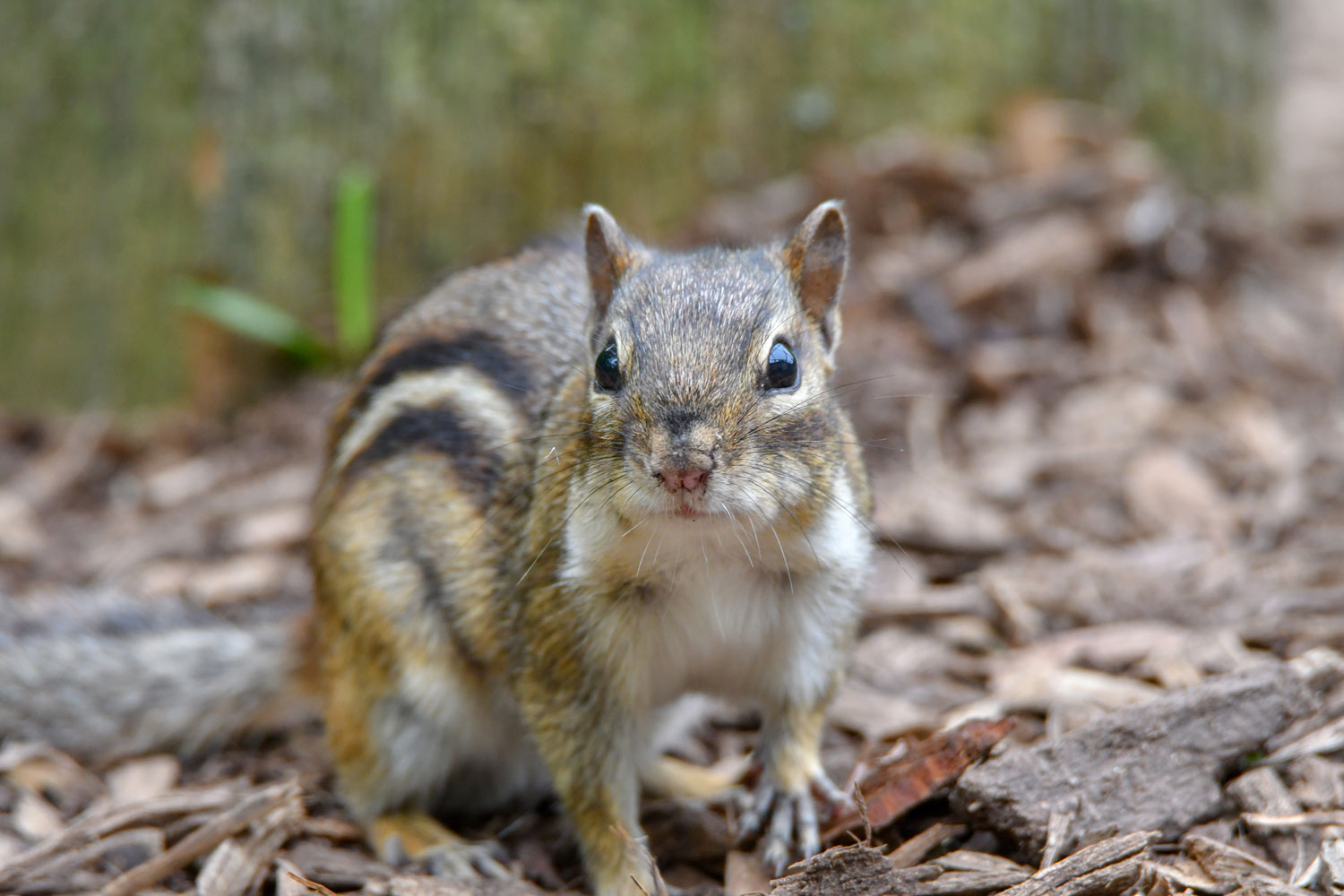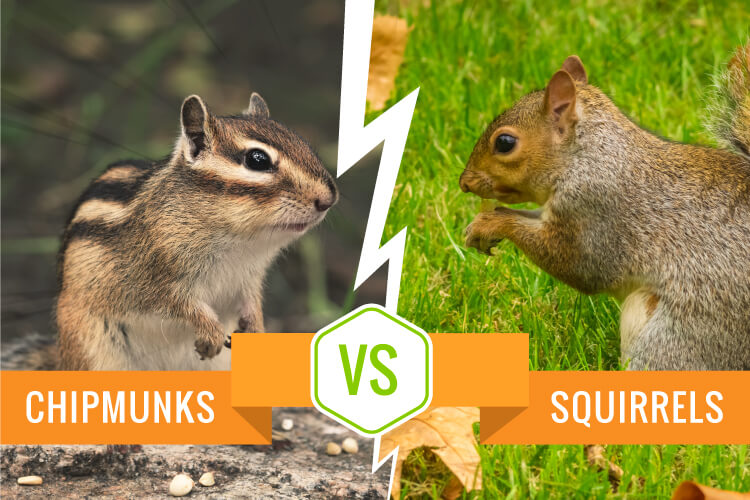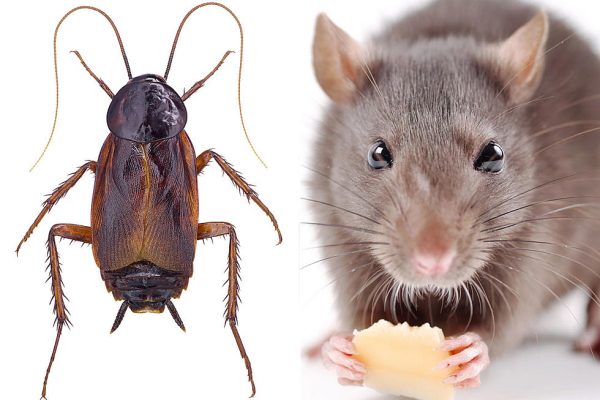Squirrels and chipmunks are small mammals that are often seen scurrying around parks, forests, and our backyards. There are some similarities between the two species, but their unique characteristics make them distinct. Throughout this article, we’ll look at chipmunks’ and squirrels’ physical attributes, habitats, behaviors, and diets to better understand their differences and similarities.
What is Chipmunk?
Small mammals in the Sciuridae family, chipmunks are squirrel-like creatures. A common sight in forests, parks, and suburbs, chipmunks are well known for their cute nature and lively personalities.
Most species are native to North America, though some have been found in parts of Asia as well. Despite their compact bodies and short legs, chipmunks have bushy tails that add to their distinctive appearance. Stripes alternate between dark and light colors along their backs, one of their most distinctive features.
What are squirrels?
The squirrel belongs to the Sciuridae family, which includes chipmunks and other small mammals. Forests, woodlands, parks, and gardens are among the habitats where they can be found worldwide.
squirrel is known for its agile movements, bushy tail, and ability to climb trees effortlessly. In addition to gray squirrels, red squirrels, and fox squirrels, they have a diverse range of species.
Differences
Physical characteristics:
There is a clear difference between chipmunks and squirrels based on their physical characteristics. Chipmunks are generally smaller, measuring between 5 and 6 inches in length, whereas squirrels are larger, ranging between 8 and 10 inches. Squirrels, on the other hand, have a uniform coloration throughout, unlike chipmunks that have stripes on their backs.
Habitat and behavior:
A chipmunk usually lives in woodland areas, digging intricate burrows for shelter underneath the ground. Often darting from one hiding spot to another, they are characterized by their energetic and quick movements.
While squirrels are adaptable to a variety of environments, including forests, urban parks, and even residential neighborhoods, they can thrive in any of these. Jumping from branches is common among squirrels, who are agile climbers.
Diet and eating habits:
Insects and nuts are all part of a chipmunk’s diverse diet, which consists of nuts, seeds, fruits, berries, and even insects.
The cheek pouches that they use to store and carry their food can be found in their burrows. Nuts, seeds, and acorns are the primary food sources for squirrels. Their forgetfulness contributes to forest regeneration by burying nuts for later consumption.
Similarities

Family and classification:
Squirrels and chipmunks are both members of the Sciuridae family, which includes a variety of rodent species. Based on their specific adaptations and characteristics, they are further classified into different genera and species.
Ecological roles and significance:
The chipmunk and squirrel play a crucial role in their respective ecosystems. Their function is to disperse seeds, assisting in the growth and distribution of plants.
As forgotten seeds sprout into new trees as a result of caching food items, they unintentionally contribute to forest regeneration.
Challenges faced:
Squirrels and chipmunks face similar challenges in their environments. A variety of predators prey on them, including birds of prey, snakes, and carnivorous mammals.
A loss of habitat and fragmentation also pose a threat to the survival and stability of these populations. Deforestation and urbanization have caused their habitats to be destroyed, forcing them to adapt to new environments.
Comparison
Size and appearance:
The size of chipmunks is generally smaller than that of squirrels. Their bodies are slender, their legs are short, and their tails are bushy.
Species differ in the color of their characteristic stripes on their backs. The long, fluffy tail of squirrels allows them to balance and communicate, whereas squirrels have a more robust body structure.
Adaptations and survival strategies:
The chipmunk has evolved to be an excellent burrower. During winter months, they use their underground tunnels to store food and protect themselves from predators. Because squirrels have strong claws and are agile, they are adept climbers. Their nests, called dreys, are high up in trees for safety and shelter.
Reproduction and lifecycle:
A chipmunk and a squirrel reproduce through sexual reproduction. Squirrels have a gestation period of around 40 to 45 days, while chipmunks have a gestation period of approximately 30 days.
A chipmunk normally gives birth to two to eight young, whereas a squirrel usually has three to six offspring. Infants of both species are born blind and hairless, dependent on their parents for nourishment and protection until they can fend for themselves.
Must Read: Top 7 Types of Flat-Face Cats
Conclusion
Squirrels and chipmunks have distinct characteristics that make them stand out from each other. Squirrels, on the other hand, are larger, have fluffy tails, and prefer to burrow underground while chipmunks have striped backs and prefer to live in burrows underground.
Even though they are different, both play an important role in their ecosystems, spreading seeds and regenerating forests. Nature’s intricate web of life can be better appreciated when we understand these fascinating creatures.





